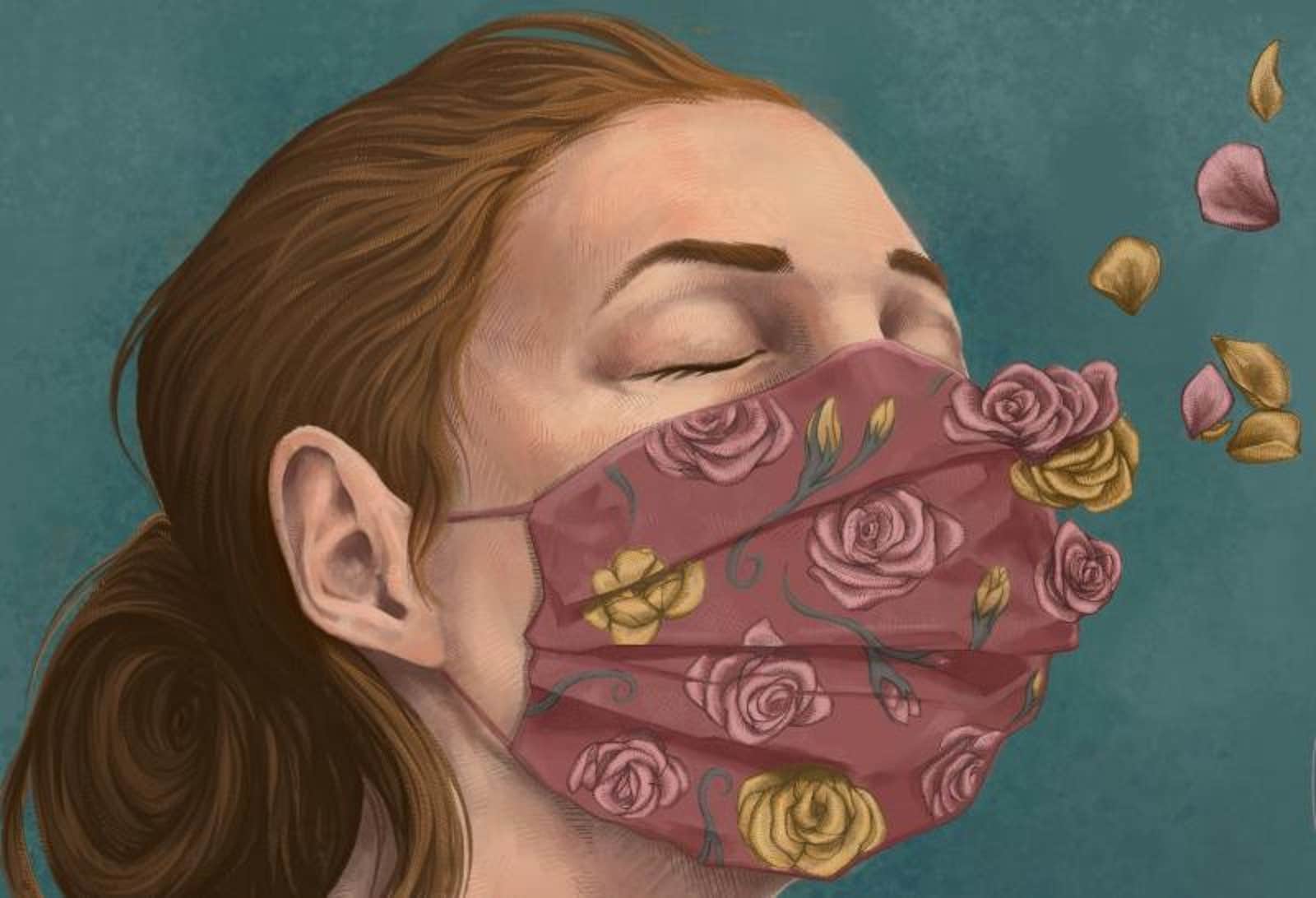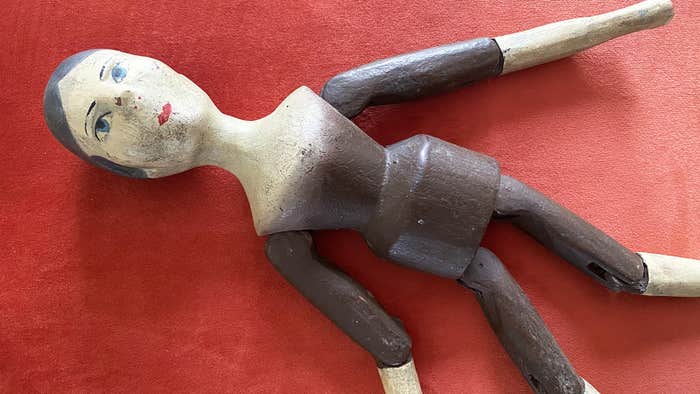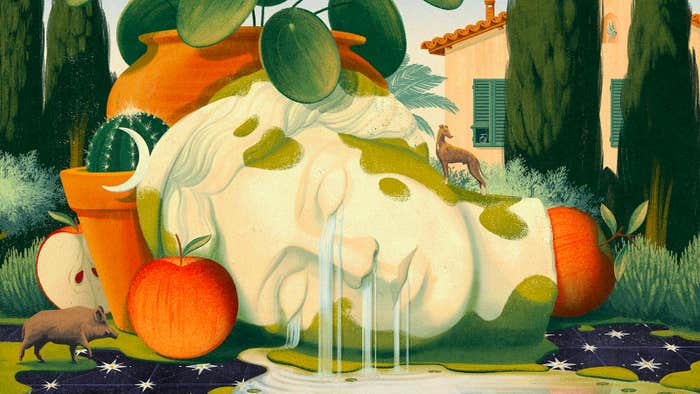
This article is part of series of Nautilus interviews with artists, you can read the rest here.
We’re all guilty of judging a book by its cover on occasion, but for Jennifer Bruce it’s a full-time job. Bruce, an award-winning artist, has created the cover illustrations for a slew of fantasy novels. Bringing the characters, story, and tone of a book to life with a single image takes a lot of careful work, and it shows in her art.
Bruce’s intricate illustrations are equal parts magic and realism, weaving together the natural world with the supernatural. That’s why she was the ideal candidate to illustrate our cover story for Issue 51. In it, biologist Zhengyang Wang shares a firsthand account of his quest through the Himalayas to unravel the mysteries of a prized Tibetan cash crop—a parasitic fungus that hijacks the brains of caterpillars.
Bruce was kind enough to take time away from her studio in Michigan to answer our questions about science fiction, her feelings on the “tortured artist” trope, and the fraught role of AI in art.
What drew you to the arts and how did you decide pursuing illustration was the path you wanted to take?
My path through college was a long and winding one. I had no idea what I wanted to do straight out of high school, so instead of getting a degree in roughly four years I wandered through a couple of terms at a university and several exploratory classes at a community college. I almost ended up with a business associate’s degree through my job, but I didn’t want to spend the rest of my life in an office. I took a couple of art classes for fun and a couple of graphic design classes, hoping that the intersection of art and business would be a good fit for me, but it felt stale and restrictive.
I eventually found out about the illustration degree at the College for Creative Studies in Detroit , and was intrigued. Somehow I hadn’t registered that illustration for books and posters and so many other commonplace things was actually a job.
Another 4-5 years later and I graduated with an illustration degree (and a minor in concept art). Many of my fellow students ended up in art-adjacent jobs, but I decided I wanted to go full tilt into freelancing. I’m still working on making that my full-time job, but it’s been an enjoyable journey!
So many of your illustrations are incredibly intricate and deeply layered; How do you know when a project is finished?
That’s quite a compliment and something I strive for! I haven’t actually thought much about how I judge that for myself—I think it’s a very intuitive and internal sense that all artists have. On one hand, I’m trying to make the image in front of me match the perfect idea that I started out with in my head; on the other hand, that’s an impossible standard, so I just get as close as I can.
When I’m looking over a near-finished piece and trying to figure out if there’s anything left to work on, I think I generally am looking for a sense of realism. Granted, my paintings are not hyper-realistic, but I do want them to be believable. If an illustration has a section that is noticeably less polished or finessed, it can stand out and take the viewer out of the moment. I don’t want any distractions like that.

What does your perfect creative day look like?
My perfect day would begin with a good sleep and getting up on time, and then one of two things: either spending the day in my hammock on my greenery-laden deck (with lots of snacks and good music of course), or jetting off to Detroit with my husband for a day full of art immersion.
I think what I like most about these two similar creative days is the time and space to stretch out and relax my creative muscles and just let the juices flow; no hurry or deadlines, just enjoying a little luxury and time to enjoy my craft.
As an artist who’s illustrated the covers of several fantasy novels, do you judge books by their covers? Has creating cover art changed the way you look at books at all?
Yes! Yes, yes, yes. These days I tend to pick up books based on whether or not the cover intrigues me. I think we all do that innately—the cover and title are the first representation of a story that a potential reader sees—but I’ve fallen more in love with beautiful book covers since I began work as an illustrator.
You can usually count on a good art director at a large publishing company to design a book cover that will hook readers in the target audience, but I find that there is a lot more disparity in the quality of book covers in the independent publishing industry. I believe we, as potential readers of an author’s work, equate the quality of the cover to the quality of the writing inside.
You could self-publish an award-winning story with a crappy book cover, and no one will look twice at it because they’ll assume you spent as much effort on the writing as you did on the cover. This is why self-published authors should never design the book cover themselves, even if they have some experience as an artist.

You illustrated the cover for Nautilus Issue 51 highlighting biologist Zhengyang Wang’s years-long quest in Tibet to unlock the secrets of the parasitic caterpillar fungus. What about his story captured your imagination?
There wasn’t much that didn’t capture my imagination! The setting is in the Tibetan Himalayas, and the story is about a caterpillar-zombifying fungus (which is a cousin to the fungi that was responsible for the zombies in HBO’s The Last of Us). The article itself is fascinating and explores a scientific mystery, eventually unearthing new information about this fungus.
Mountains are fun to paint, and I was also intrigued by the shapes and colors of the fungi and caterpillar husk. I also got to paint a hand, which if you can’t tell by my portfolio of past work, I enjoy drawing!
Is there anything you think scientists can learn from artists—or vice versa?
Certainly! I think what stands out to me as a difference between many artists and scientists is the level of “rigidity,” let’s say. While scientists must conduct their research according to strict parameters in order to arrive at reliable conclusions, artists tend to build on top of or ignore the rules that are set for them—this is, in a sense, the nature of creativity.
I was told in art school that an artist “needs to know the rules in order to break them correctly.” This means that if an artist doesn’t know how to draw a figure, any attempt to make an abstract interpretation will look very juvenile and wrong. But if they have experience in drawing a figure the “right” way, they will know which parts to emphasize or minimize, what angles to keep the same or to change. In this way they can make something abstract that doesn’t completely take the viewer out of the moment.
To summarize, I think that good scientists need to learn creativity, and good artists need to learn structure, and perhaps they could better learn these traits from each other.
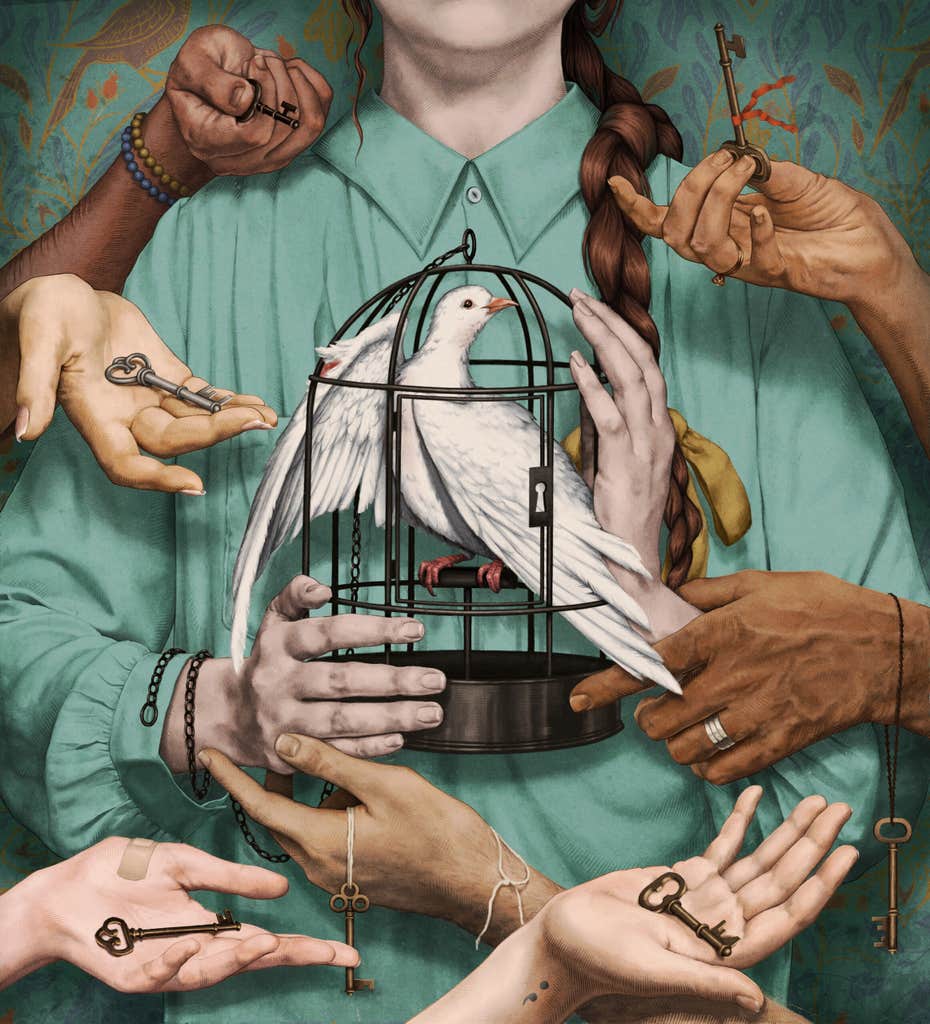
You recently won an award for your piece “A Particular Blindness” about how people struggle to ask for help with mental health issues and you’ve been open about the benefits of therapy. How do you feel about the “tortured artist” trope?
That’s a great question. I think it’s a rather fair assessment of many artists, because I think creativity lends itself particularly to expression of inner struggles. Perhaps, through repetition and practice, artists in general are more attuned to their own inner worlds and are better able to express their feelings in tangible ways. I wonder if non-artists found a similar source of expression perhaps it would be more of a “human” trait rather than an artistic one.
I think perhaps that people who feel that they are “other” in comparison to their peers also tend to lean into the things that make them different and emphasize those struggles through creative expression. Perhaps we just call attention to our struggles more than most?
And because we tend to deal in abstract concepts, bringing deep emotions and ideas to light, and explaining through visuals the otherwise unexplainable, we are naturally more likely to share our inner struggles with our visual languages.
The rise of generative AI services like Midjourney is causing some controversy in the art world. What are your thoughts on the use of AI to create art?
I have to admit that this topic is a sore spot, for sure, as it is with many artists. I have two main issues with AI art.
First, image-generating AIs are often trained off of a human artist’s work, since AIs (so far) can only reproduce based on input. Some AIs will even output works that are based on a specific artist’s personal style. This creates a gigantic copyright issue that needs to be given importance. Once the copyright laws surrounding this are defined, I think that the drama surrounding the issue will lessen.
Second, yes, we artists are afraid of losing our jobs to computers. Why that is a controversial idea, I don’t know. We put our hearts and souls and years of training with blood, sweat, and tears into our careers, just like anyone else in another industry would. Perhaps because many people seem to assume that artists are just “talented,” and that they “naturally” have the ability to bring conceptual ideas to life on paper, they also assume that we don’t have to work hard, learn, and practice.
I have a bachelor’s degree in art. As I’m just getting into my career, I find that AI may eventually make all of my hard work obsolete, possibly by copying my work and profiting off of the derivatives. Who wouldn’t be afraid of that happening to their own career?
I also resent the idea that art is something that “anyone” should be able to do, and therefore this advance in AI that will allow the everyman to make quality art is a plus. Each person in the world has their own individual skills, and career specialization is part of why humanity has come so far in science and technology. I’m not going to complain to the world if I can’t write a symphony or cook an award-winning five-course meal at the drop of a hat. Beautiful things should take experience, hard work, and lots of time—that’s part of their beauty. I fear we would lose some of our humanity if we cheapen that.
However, I do have some faith in humankind that leads me to believe that people still value human-made designs. We want to look at something beautiful, in awe, and say, “Wow, someone made that? I wonder what they were thinking about when they created this. I wonder how long it took.” Because I see many individuals and organizations speaking out about this issue, I don’t think that human-made art will go quietly into the night.
Rant over! I appreciate the opportunity to speak my own thoughts about this.
Have you experimented with any of these programs or do you see a role for them in your work?
I haven’t, yet. If I ever do integrate one of those programs into my work, I think I would try to train an AI specifically on my own style of painting in order to add speed to my process (paint backgrounds, base figures, assist with animation, etc.). That way there wouldn’t be any copyright violation (that I’m aware of currently), and I wouldn’t feel like I’m riding on the coattails of other artists for my own gain.
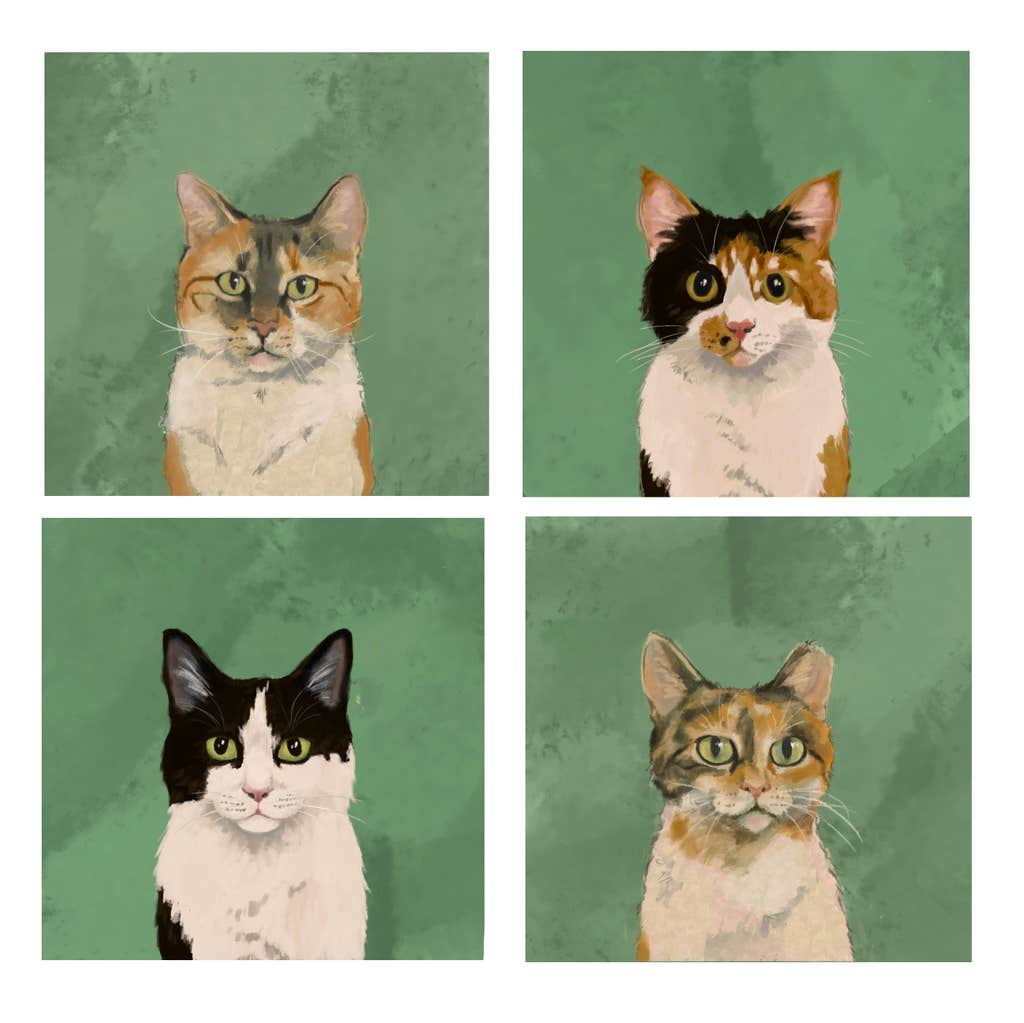
Before we let you go, in addition to fantasy, you’re also a sci-fi fan. Can you give our readers any recommendations?
Definitely. I grew up with sci-fi loving parents, especially my cinephile dad, so good science fiction stories are in my DNA. I’ve greatly enjoyed reading Frank Herbert’s Dune, and I loved the incredible mix of world building, adventure, and philosophy that the author presented. (My copy also has a gorgeous cover.) I’m a stoic Star Wars fan, and I enjoy Star Trek, Stargate: Atlantis, and many others. One movie I’ve recently enjoyed very much is Prospect, starring Pedro Pascal. It’s a somewhat low-budget movie that actually handles their resources very well and creates an original and wonderfully moody adventure.
My absolute highest recommendation for a science fiction book series (and even more for the TV show) is The Expanse by James S.A. Corey. I first watched the series and then listened to the audiobooks (which are phenomenal). The level of detail and commitment that the authors put into it is incredible, and you can tell that they did their research about space-travel, the effects of extended low-gravity exposure on human bodies, how interplanetary politics would work, and so much more. And then, like good creatives, they bend the rules to add in some crazy alien stuff, but you don’t mind because everything else is so believable.![]()
Interview by Jake Currie.
Lead image courtesy of Jennifer Bruce.



















